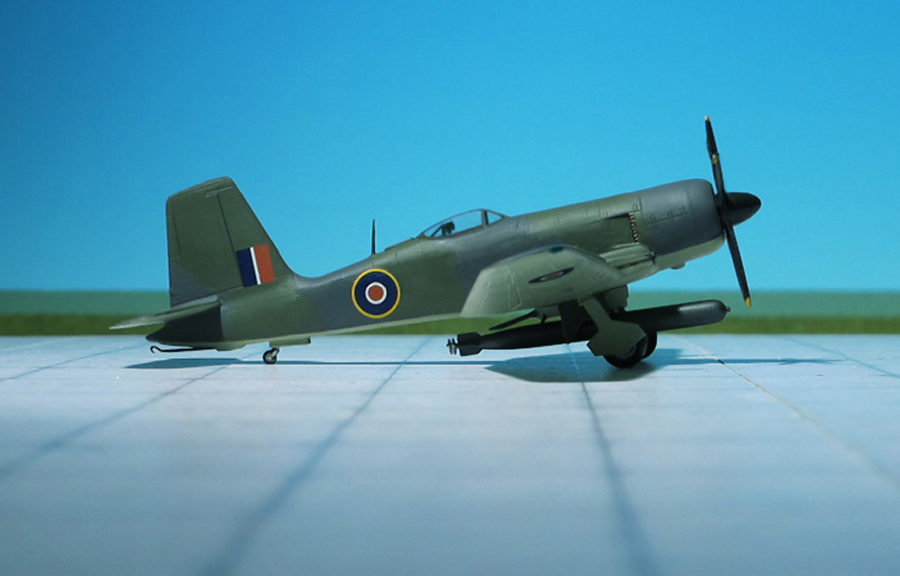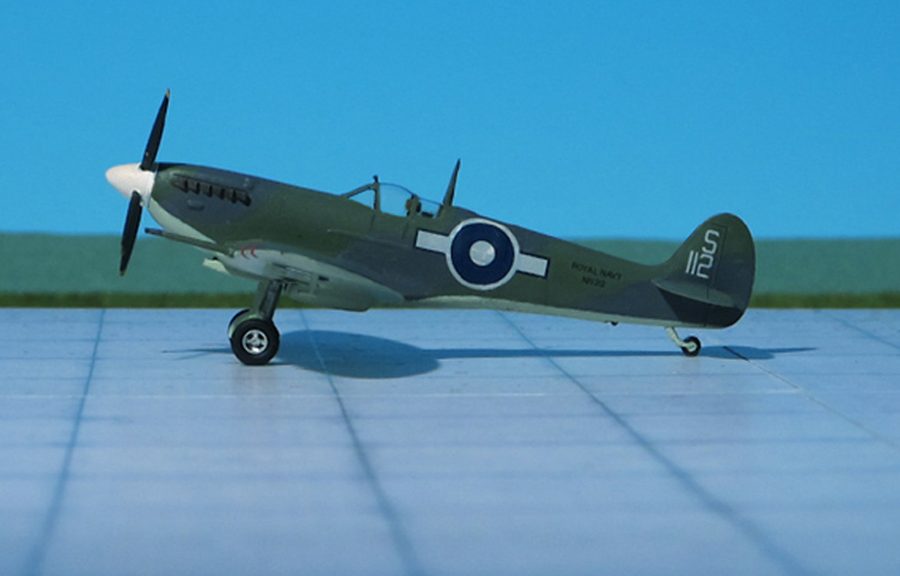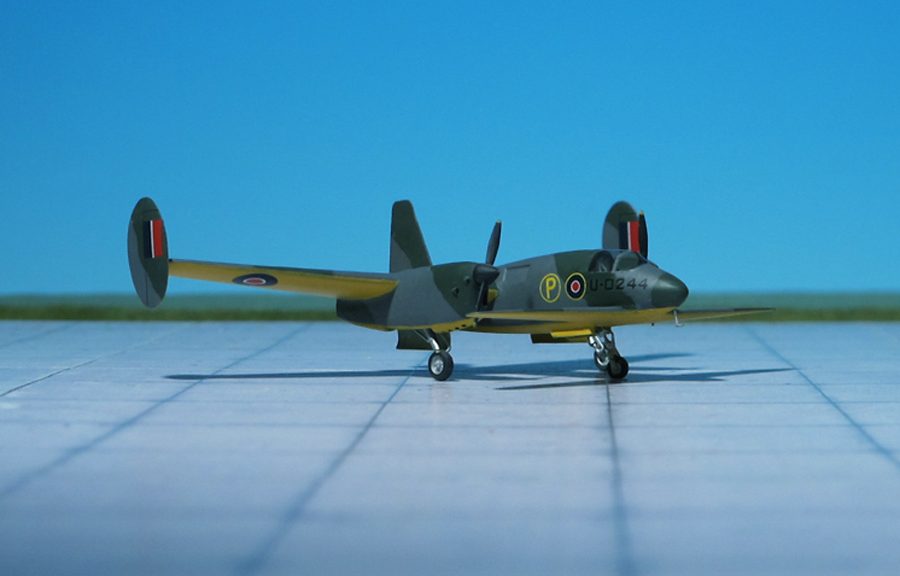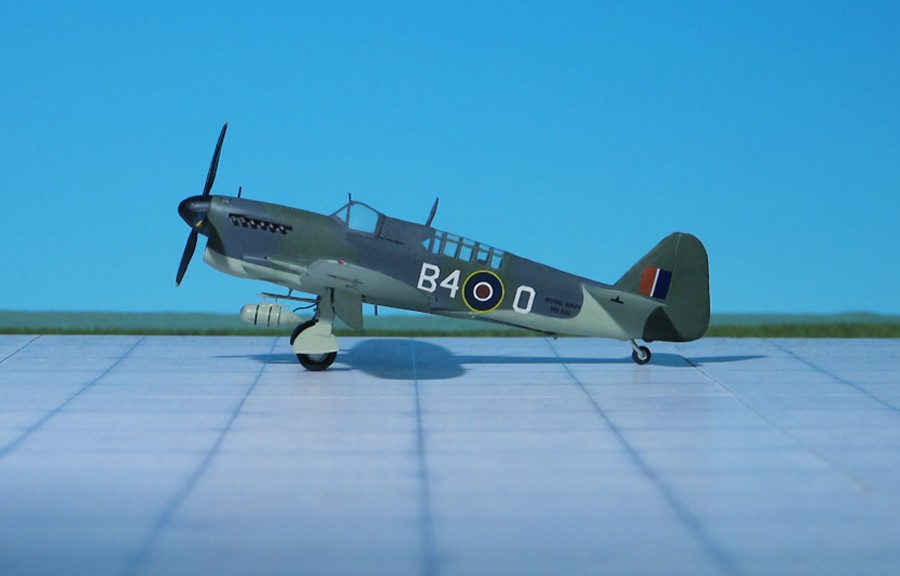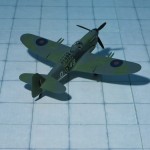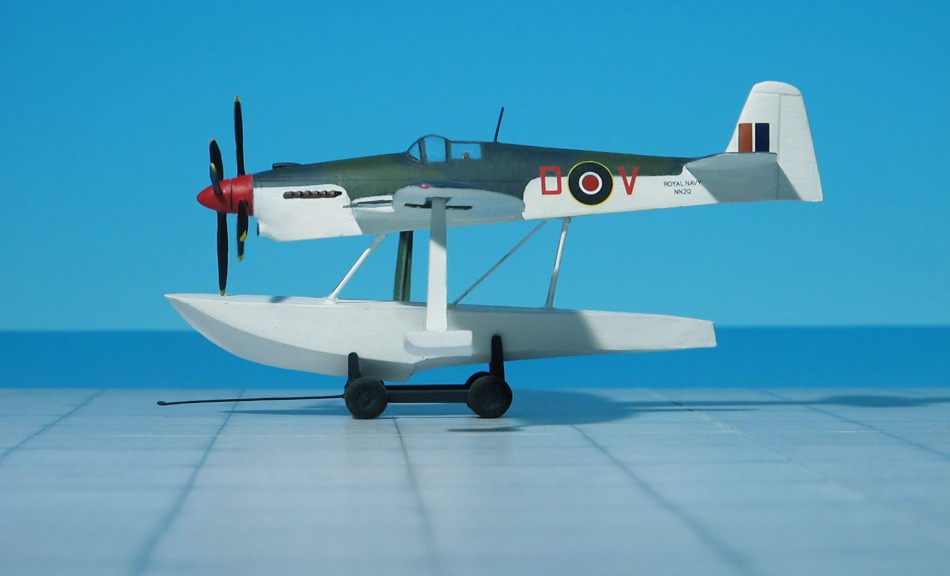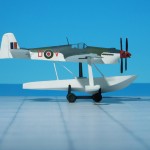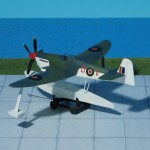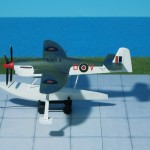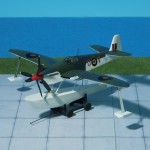TYPE: Carrier-borne torpedo bomber, fighter bomber, fighter
ACCOMMODATION: Pilot only
POWER PLANT: One Bristol “Centaurus” IX radial engine, rated at 2,520 hp
PERFORMANCE: 342 mph
COMMENT: The Blackburn “Firebrand” was a British single-engine strike fighter for the Fleet Air Arm of the Royal Navy designed during World War II by Blackburn Aircraft. Originally intended to serve as a pure fighter, its unimpressive performance and the allocation of its Napier “Sabre” piston engine by the Ministry of Aircraft Production (MAP) for the Hawker “Typhoon” caused it to be redesigned as a strike fighter to take advantage of its load-carrying capability. Development was slow and the first production aircraft was not delivered until after the end of the war. Only a few hundred were built before it was withdrawn from front-line service in 1953
The B-37, given the service name “Firebrand” on July 1941, was a low-winged, all-metal monoplane. Aft of the cockpit the fuselage was an oval-shaped stressed-skin semi monocoque, but forward it had a circular-section, tubular-steel frame that housed the main fuel tank and the auxiliary fuel tank behind the engine. The radiators for the neatly cowled “Sabre” engine were housed in wing-root extensions. The large wing consisted of a two-spar centre section with manually folded outer panels to allow more compact storage in the hangar decks of aircraft carriers. To increase lift and reduce landing speed the wing was fitted with large, hydraulically powered flaps that extended to the edges of the ailerons. The fixed armament of four 20 mm cannon was fitted in the outer wing panels. The fin and rudder were positioned forward of the elevator to ensure spin recovery and that the rudder would retain its effectiveness. The mainwheels of the landing gear were mounted at the ends of the centre wing section and retracted inwards.The “Firebrand” was unusual in the fact that there was an airspeed gauge mounted outside of the cockpit so that during landing the pilot would not have to look down into the cockpit to take instrument readings, foreshadowing the modern heads-up display.
The unarmed first prototype first flew on February 1942 using the “Sabre II”, the first of two armed prototypes following on July same year. The initial flight trials were a disappointment as the aircraft could only reach 32 mph below Blackburn’s estimated maximum speed. Replacement of the “Sabre II” with a “Sabre III”, an engine built specifically for the “Firebrand” improved its top speed to 358 mph at 17,000 ft. The second prototype conducted deck-landing trials aboard the fleet carrier HMS “Illustrious” in February 1943.The “Sabre” engine was also used in the Hawker “Typhoon”, a fighter already in production and the MAP decided that the “Typhoon” had priority for the “Sabre”. The “Sabre” was also experiencing production problems and so a new engine was needed, along with the necessary airframe adaptations. To use the time and effort invested in the design, the MAP decided to convert the “Firebrand” into an interim strike fighter, to meet a Fleet Air Arm requirement for a single-seat torpedo bomber capable of carrying bombs, rockets and being capable of air-to-air combat. Nine production “Firebrand” F. Mk I aircraft were built to the original specifications and were retained for trials and development work
A new specification was issued as S.8/43 to cover the development of the “Firebrand” T.F. Mk III with the 2,400 hp Bristol “Centaurus” VII radial engine. Two prototypes were converted from incomplete F Mk Is and 27 additional aircraft were delivered, completing the first batch of 50 aircraft. The first prototype flew on December 1943, but construction of the new aircraft was very slow with the first flight not being made until November 1944. Most changes were related to the installation of the larger-diameter “Centaurus” engine, including air intakes for the carburetor and oil cooler in the wing-root extensions that formerly housed the engine’s radiators. Production aircraft after the first 10 were fitted with the improved “Centaurus” IX engine. The “Firebrand” T.F. Mk III was found to be unsuitable for carrier operations for a variety of reasons. The new engine produced more torque than the “Sabre”, and rudder control was insufficient on takeoff with the full flaps needed for carrier use. Visibility while landing was very poor, the tailhook attachment to the airframe was too weak, and the aircraft had a tendency to drop a wing at the stall while landing, so development continued to rectify these issues.
The “Firebrand” T.F. Mk IV, as the new development was designated, featured larger tail surfaces for better low-speed control. The enlarged rudder was horn balanced and the vertical stabilizer was offset three degrees to port to counteract the four-bladed Rotol propeller’s torque. The wings now featured hydraulically operated dive brakes on both upper and lower surfaces. The aircraft’s wings were now stressed to carry heavy bombs, drop tanks or RP-3 rockets. The frame that held the torpedo was connected to the undercarriage so that it pivoted nose-downward to increase ground clearance with the landing gear extended and pivoted upward to reduce drag while in flight. The “Firebrand” T.F. Mk IV first flew on May 1945, and 250 aircraft were ordered. But only 170 aircraft were completed and 50 more aircraft were cancelled (Ref.: 24).
